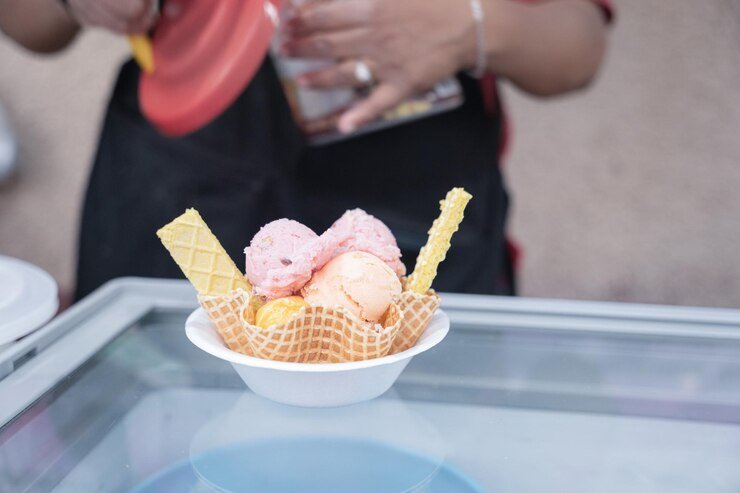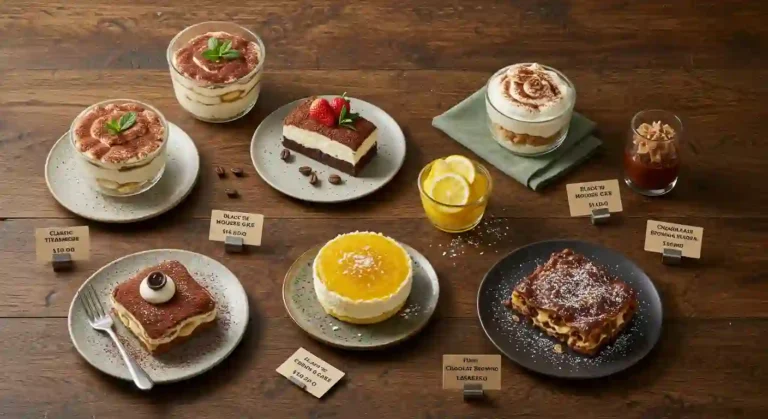Although making ice cream at home can be enjoyable, frequent errors can alter the flavour and texture. A common mistake that results in ice crystals is not cooling the liquid sufficiently before whirling. Insufficient freezing can also occur from utilising heated materials or overloading the machine. Mix-ins may sink or get mushy if you add them too quickly. Your ice cream maker’s efficiency may suffer if you don’t clean or maintain it on an ongoing basis. Creaminess may change if reduced-fat components are used. Always use the X25802 Tune Up Kit Model 142 to maintain the highest possible efficiency and consistently tasty, smooth ice cream from your machine.
1. Unchilled Ice Cream Base
Not fully freezing the ice cream base before putting it in the maker is one of the most frequent errors made by novices. Instead of the smooth creaminess you want, a warm or even at room temperature base can hinder adequate swirling and produce a grainy, frosty feel.
In addition to helping achieve the right consistency, chilling the base facilitates flavour melding and improves the final product’s entire flavour. Before churning, the foundation should ideally sit in the fridge for at least 4 to 6 hours, or even better, overnight. This stage is sometimes skipped by anxious people, which has a major impact on the quality of the finished item.
2. Unbalanced Ingredient Substitutions
To “healthify” their ice cream, customers also frequently make the error of substituting low-fat milk for cream or synthetic sweeteners for sugar, without considering the impact on the very last consistency. In addition to adding flavour, fats and sugar have an effect on the flavour, texture, and structure of ice cream.
Fat contributes to the adorable, creamy texture that all of us choose. It gives ice cream its one-of-a-kind volume and creaminess with the aid of stabilising the aggregate and retaining air whilst it churns. In the same manner, sugar prevents the combination from solidifying inside the freezer by decreasing its point of freezing factor. If you don’t upload sufficient sugar, your ice cream could get too tough or icy.
Ice Cream Toppings: Ideas to Elevate Your Dessert
3. Improper Machine Loading
There’s a reason your ice cream maker has certain capacities. Dense, heavy ice cream is produced when the machine is overfilled since this restricts the quantity of air that can be added during churning. However, because the machine requires a sufficient amount to churn efficiently and produce the proper flavour, underfilling can also be an issue.
The majority of devices are made to be filled between 50% and 75% of their full capacity. As air is whipped in, this gives the base adequate room to grow. To determine your equipment’s maximum capacity for operation, always refer to the handbook.
If these directions are not followed, the engine may be overworked or the ice cream may freeze irregularly.
4. Including Mix-ins at the Inappropriate Time
Everyone likes chunky rocky road or a scoop of cookies and cream, but if you add your mix-ins too soon or too late, the consistency may be off. Mix-ins like fruit, cookie pieces or chocolate chips that are introduced too early in the churning process tend to fall to the bottom or break up when the dasher comes into contact with them. They might not mix evenly into the ice cream if you add them prematurely.
The final two to five minutes of churning, when the ice cream has thickened but is still soft, is the ideal moment to add mix-ins. This keeps the texture intact while guaranteeing an even distribution. For this purpose, some machines even feature special mix-in ports.
5. After Churning, Poor Storage
You may be tempted to eat your ice cream as soon as you’ve completed churning it, but while it’s okay to savour the soft-serve texture right away, improper storage of the leftover amount might undo all of your hard work.
Putting freshly churned ice cream in a field and just throwing it in the freezer are the most commonplace blunders human beings make. The frozen dessert may also have freezer burn, ice crystals, or end up overly solid if it isn’t nicely insulated or saved in a hermetic container. Textural issues may additionally arise from the usage of containers which might be too large or now not freezer-safe.
Carefully preserve your ice cream in airtight, shallow boxes designed for freezing.
6. Not Taking Care of Your Ice Cream Maker
Your self-made dessert business relies heavily on your ice cream maker. Poor churning performance, inconsistent freezing, or maybe mechanical failures would possibly result from fallacious cleansing, servicing, or renovation.
The bowl, dasher, lid, and different detachable parts must all be cautiously wiped clean after each usage. The ultimate leftover may additionally solidify, develop mould, or exchange the flavour of your subsequent batch.
Final Words
Although it takes attention to detail, making ice cream at home is a fun experience. From chilling the base to whirling and storing the finished item, every stage of this procedure is essential to the result. You can greatly raise the calibre of your handmade ice cream by avoiding the typical errors listed above.




